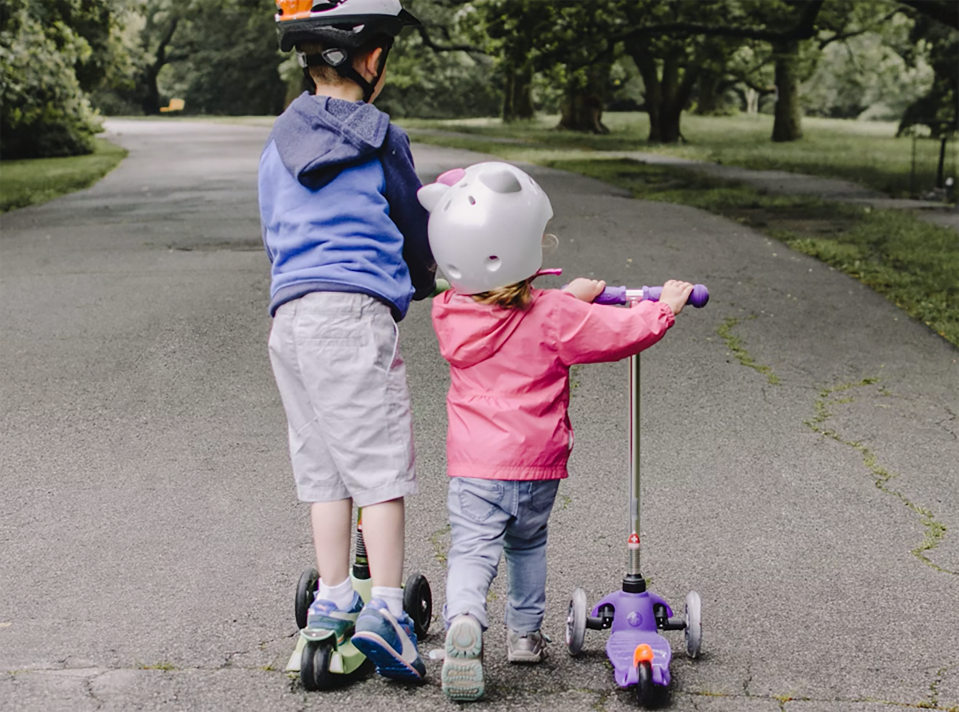Scooter Kids - The Joy and Challenges of Urban Playgrounds
In the age of urbanization, cities have transformed into sprawling landscapes of concrete, glass, and asphalt. These urban jungles provide fertile ground for new forms of recreation, one of which has become particularly popular among children scooters. Kids zipping around on colorful scooters have become a common sight in parks, sidewalks, and streets, embodying the spirit of carefree childhood. However, while the sight of scooter kids may bring joy and laughter, it often comes with its own set of challenges, especially when they get in the way of pedestrians and vehicles.
Scooters are often seen as the perfect vehicle for children. They are lightweight, easy to maneuver, and allow for a sense of freedom that walking does not. Kids love the speed and excitement that come with riding a scooter, and parents appreciate the opportunity for their children to engage in physical activity while navigating their urban environment. The benefits are clear. Scooters help develop balance, coordination, and even social skills as kids gather in groups to ride together and navigate the challenges of their surroundings.
Scooter Kids - The Joy and Challenges of Urban Playgrounds
To address this challenge, urban planners and city officials must consider the design of public spaces. Creating designated areas for children to ride scooters—such as skate parks or specific lanes—can help reduce the chances of accidents. Such spaces allow kids to enjoy their scooters without interfering with pedestrian traffic. Additionally, cities can implement educational programs aimed at teaching children about road safety and awareness, ensuring they understand the importance of being mindful of their surroundings while riding.
scooter kids getting in the way

Moreover, communities can foster a culture of shared space and mutual respect between scooter riders and pedestrians. Awareness campaigns highlighting the need for vigilance and courtesy can go a long way in preventing conflicts. Children should learn to yield to walkers, and walkers, in turn, should keep an eye out for young riders, especially during peak times in areas like parks or busy streets.
Technology can also play a role in enhancing safety. App developers could create games or challenges that incentivize kids to ride in safe environments, rewarding them for staying away from crowded sidewalks. Moreover, parents can encourage responsible riding behavior through playful reminders about safety, such as not riding too close to other pedestrians or always keeping a lookout for those around them.
In conclusion, the phenomenon of scooter kids in our urban environments is a testament to the adaptability of childhood play in modern society. The joy and excitement they experience on their scooters highlight the importance of play in development and community engagement. However, as cities continue to grow and evolve, finding a balance between recreational freedom for children and safety for pedestrians remains crucial.
By focusing on thoughtful urban design, community awareness, and education on safety, we can ensure that kids enjoy the thrills of scooter riding without compromising the safety and comfort of everyone else in the neighborhood. After all, creating a safe, enjoyable environment for our children to play in is one of the best investments we can make for the future of our cities—and for the carefree joy of childhood itself. In the end, scooter kids getting in the way is not just a matter of collision avoidance; it’s about fostering a sense of community where everyone can coexist harmoniously, enjoying the vibrant life that urban areas have to offer.
-

 Scoot&RideKids Child Kick Push Scooter 3 Wheels with LED Flashing Tilt Lean Boys Girls Scooter
Scoot&RideKids Child Kick Push Scooter 3 Wheels with LED Flashing Tilt Lean Boys Girls Scooter




- 4
$33.17 -

 Scoot&RideKids Scooter Child Kick Flashing LED Light Up 3 Wheel Push Adjustable Folding 3
Scoot&RideKids Scooter Child Kick Flashing LED Light Up 3 Wheel Push Adjustable Folding 3- 0
$25.52 -

 Scoot&RideKids Scooter Child Kick Flashing LED Light Up 3 Wheel Push Adjustable Folding 2
Scoot&RideKids Scooter Child Kick Flashing LED Light Up 3 Wheel Push Adjustable Folding 2- 0
$33.17 -

 Scoot&RideKids Scooter Teens Foldable Kick Push Scooter Adjustable Height Safe 2 Wheels
Scoot&RideKids Scooter Teens Foldable Kick Push Scooter Adjustable Height Safe 2 Wheels




- 4
$49.99
Meet our partners and discover what powers their creativity!
When you register for a Lohas scooter, you will receive a 10% discount on your first order and can be notified of sales, new product launches and other offers in advance.









